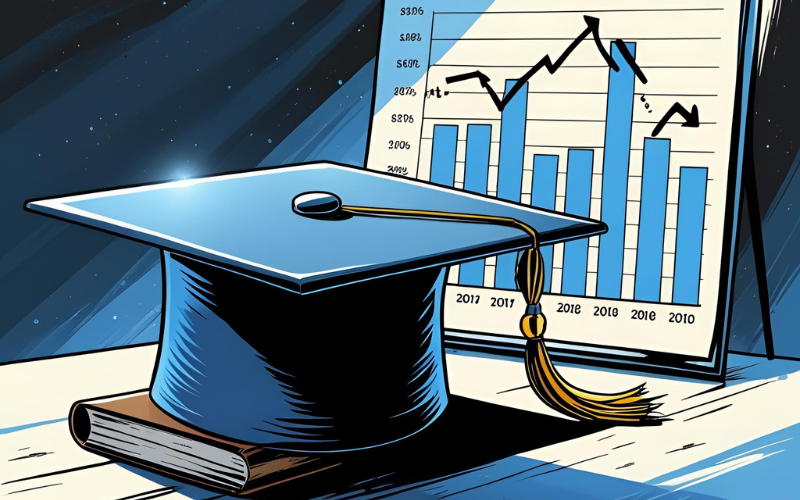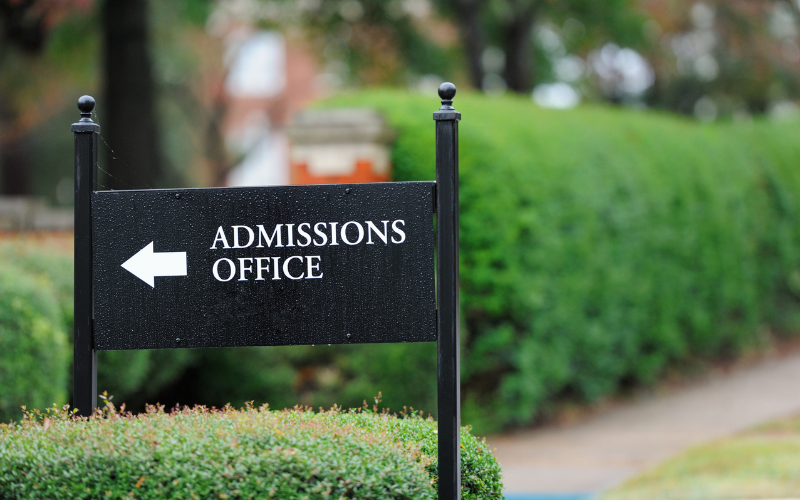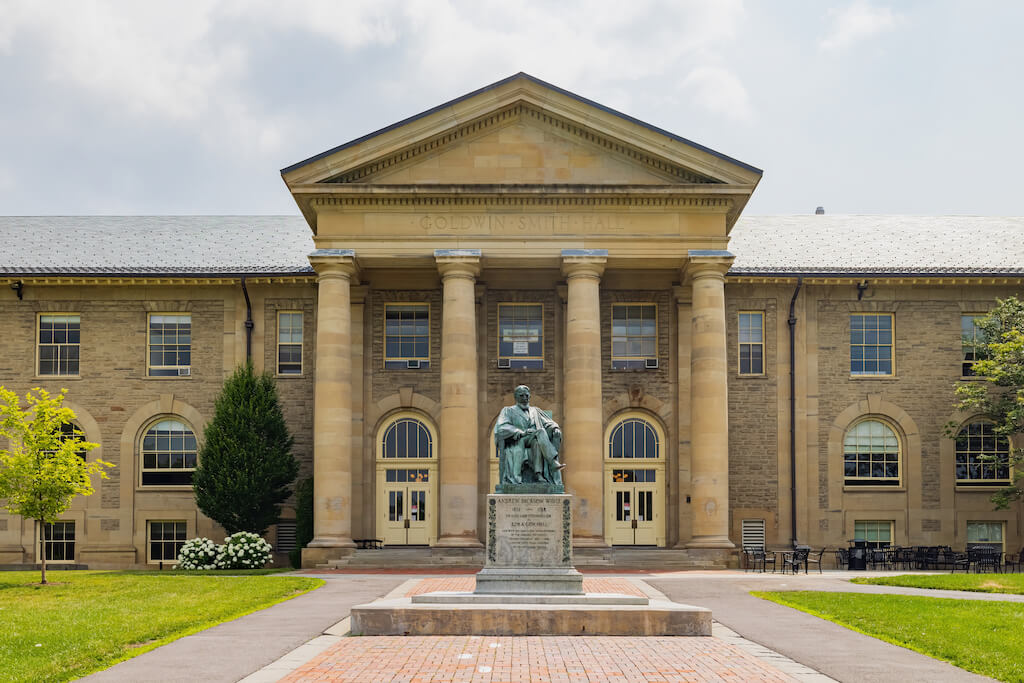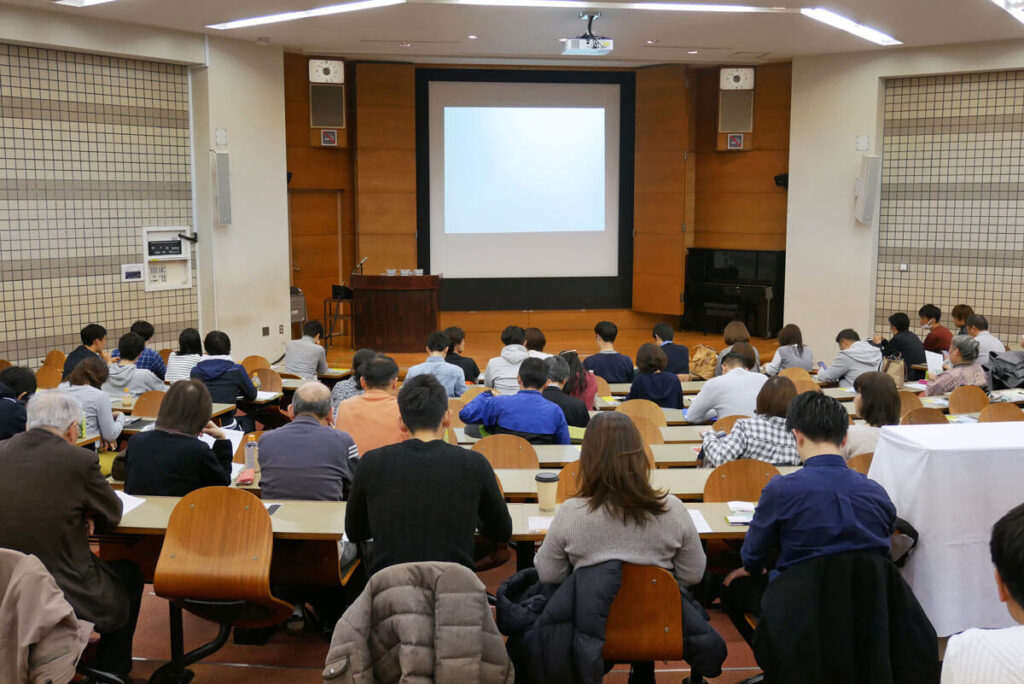It’s not unusual for American higher education to be in the news. In recent years, the headlines have ranged from massive student loan debt to student athlete compensation and from innovative research university discoveries to competition from coding camps and other alternative providers.
Since President Trump’s inauguration in January, the news has focused more on his administration’s executive orders, proposed budget changes, and how they might impact higher education. When I read about Ohio University emeritus professor of economics Richard Vedder’s newly published book, Let Colleges Fail, I ordered it.
Professor Vedder earned his PhD in Economics from the University of Illinois in 1965. He has had a long career in academics, publishing more than 200 articles and books. His field of study has been the history of the impacts of public policy on economics, with a focus on education over the past 25 years. His criticism of higher education was not as surprising as his recommendations.
Let Colleges Fail is organized into 12 chapters. Depending on your perspective (as a student, parent, faculty member, journalist, politician, taxpayer, etc.), some chapters may be more relevant than others. I thought I’d organize my review and discussion by chapter.
While I don’t agree with all of Professor Vedder’s recommendations and observations, I find them well-reasoned and useful for the current ongoing discussions about the future of higher education.
Higher Education is Failing! Ten Cardinal Sins
Chapter 1 kicks off with the author’s comment that he condensed the problems discussed in his 400-page book, Restoring the Promise: Higher Education in America, published in 2019, to ten. Each of the ten problems is discussed below.
Enrollments Have Been Falling
Since higher education enrollment peaked in 2010 at 21,019,438, the numbers of students enrolled have continued to decline steadily. Vedder’s data only includes enrollments through 2022. In 2023 and 2024, total enrollments increased by approximately 300,000 each year, but they are 9% below the 2010 peak as we enter a projected demographic cliff for the next 15 years.
Vedder writes, “a growing number of young people are ‘just saying no’ to college, apparently believing that the gains from attending school are likely to be less than the costs.”
Public Support of, and Confidence in, Higher Education Is Low
Vedder cites a 2023 public opinion poll conducted by the Wall Street Journal and NORC that found 56% of respondents agreed college was “not worth the costs because people graduated with no job skills and a large amount of debt to repay.” He adds that in a 2017 poll, 49% said college was worth the cost, and in 2013, 53% said college was worth the cost.
Unpopular Ideas Are Often Suppressed or Ignored
Professor Vedder leads by stating that universities provide a presumably neutral forum for evaluating and disseminating ideas. He writes that there are many stories about the oppression of ideas on American campuses. He illustrates his point with four examples of free expression being suppressed at Yale University, the University of Pennsylvania, Stanford University, and Ohio Northern University.
Intellectual Diversity Is Declining
Overwhelming numbers of faculty members at most universities are registered Democrats and politically on the left. Vedder writes that colleges and universities could mitigate the lack of intellectual diversity if they wanted to. In addition to valuing intellectual diversity as a rationale for hiring, colleges could welcome visitors with differing points of view.
The Cost of College Is Extremely High
After adjusting for inflation, the cost of higher education rose approximately 1% a year from 1840 to 1978. In the four decades after 1978, it rose approximately 3% a year.
Prior to 1978, incomes rose 2% a year due to increasing productivity; thus, the costs of college decreased as a proportion of family income. College enrollments grew rapidly. After 1978, the costs of college became an increasing burden as a percentage of family incomes.
Vedder cites a March 2016 study by David Lucca, Taylor Nadault, and Karen Shen that found that colleges and universities captured 60-65% of incremental federal financial aid through higher tuition and fees.
As demand for college has declined since 2010, Vedder writes that the ability of colleges and universities to raise tuition has weakened.
College Students Often Do Not Learn Much
Colleges typically report little about their success in enhancing their students’ academic achievements. How successful is higher ed when 40% of freshmen who enter college do not graduate in six years? Vedder cites Richard Arum and Josipa Roksa’s book Academically Adrift as a source indicating that college seniors’ critical learning and writing skills are not significantly better than those of freshmen.
Colleges Are Overwhelmed by Administrative Bloat
Asking the reader to pick 50 random faculty members from across the U.S. and across various types of colleges, Vedder writes that almost all of those faculty would agree that there are too many college administrators. The proportion of administrators to faculty has risen so fast that college resources for disseminating and creating knowledge have been significantly reduced.
Access to Higher Education Among the Poor Has Declined
Despite the additional financial aid programs for low-income and disadvantaged students, Vedder points out that the proportion of Americans attending college from the bottom quartile of family income distribution is less than it was in 1970.
Measures of income inequality indicate a widening of inequality during the past four decades, the same era of higher-than-inflation growth of the cost of college. During that period, the proportion of income earned by the top 5% of families increased, “consistent with the notion that higher education promotes an aristocracy of sorts.”
The Rate of Return on College Investments Is Decreasing
Reiterating that approximately 40% of college freshmen fail to graduate in six years, the author notes that close to 40% of recent college graduates are “underemployed” according to a recent Federal Reserve Bank of New York publication.
The use of averages “disguises the reality that not all college graduates are ‘average.’” Vedder points out that students earn vastly different salaries depending on their college major. The rise in income for college graduates has been accompanied by increasing student loans, something not incurred by high school graduates. This has resulted in a declining difference in wealth between college and high school graduates.
Colleges Are Bad at Optimally Using Human and Physical Resources
Full-time students are required to attend college for 32 weeks. Professor Vedder asks what happens to the classrooms and auditoriums for the other 20 weeks. The underutilization of resources is not limited to the physical plant. He writes that the staff are more underutilized than the faculty during this period, arguably continuing their research initiatives.
According to Vedder, students may be the most underutilized resource. They don’t study hard, thanks to grade inflation, and they take four years to complete a bachelor’s degree that in the UK only takes three years. Society loses the value of U.S. college grads for a year because of the extra year required to graduate.
Capitalism Succeeds by Allowing Failures via Creative Destruction
Professor Vedder writes that the major names in the stock exchange at the beginning of the century (2000) are no longer at the top of the list of America’s most successful companies.
He suggests that we contrast the market’s influence on America’s top companies to the changes in rankings of America’s top universities. Of the top 25 universities ranked by U.S. News & World Report in 2000, all but one were on the same list in 2022. Of the top 25 corporations on the Fortune 500 list in 2000, only six were on the same list in 2022.
The explanation for the shift in members of the top 25 of the Fortune 500 relates to the fact that “old methods of making goods and services were replaced by new modes of production and even new goods and services to produce.” Businesses find better ways to do things and direct their resources to those companies providing those services/products.
Vedder writes that economist Joseph A. Schumpeter understood this redirection of resources process and, in 1942, coined the term “creative destruction” to describe it.
There are several reasons why universities behave differently from corporations. Vedder writes that the compensation of leaders of these sectors is vastly different. Most corporate executives have a very high percentage of their income in the form of stock options or bonuses, whereas the top university presidents are paid a salary.
Not all college leaders are paid salaries. Top athletic team coaches and investment officials at universities with endowment valuations in the billions are compensated like individuals performing similar roles in the private sector.
Corporations measure their financial success by whether their profits and/or stock values increase. Vedder asks what the bottom line is in higher education? Even though universities collect information on new donations, changes in enrollments and endowment balances, and incoming students’ GPA and SAT/ACT scores, there are no standard metrics for evaluating the “bottom line” of universities.
Professor Vedder writes that businesses in the U.S. increased their productivity approximately 2.5 times between 1970 and 2020. Calculating the ratio of students per staff person from 1972 to 2021, Vedder reports that the ratio declined, meaning that it took more staff to educate a student in 2021 than it did in 1972.
If higher education had achieved the same improvement in productivity as businesses during that 30-year period, Vedder writes that some of the issues in the previous chapter would have been mitigated.
Universities are “wards of the state,” dependent on high tuition fees made possible by federal loans, direct government subsidies, substantial research grant support, etc. Even donations are aided by the tax breaks that federal and state governments provide. Vedder argues that universities should become more responsive to market forces and subject to creative destruction.
Why Are Universities Subsidized, but Firms Taxed?
The notion that universities are distinctly different than other human endeavors is not a recent idea. Going back to the Victorian era, John Henry Neuman implied that universities conferred goodness on society that extended beyond their students’ learning.
In 1962, economist Milton Friedman published Capitalism and Freedom, extolling the virtues of free markets over government interventions. He argued for an exception for universities, claiming that they had positive neighborhood or spillover effects.
Friedman wrote that he did not advocate that governments should own and run schools. He preferred that governments give students vouchers, allowing them to choose their schools and introduce the efficiencies of markets to schools.
Vedder wrote to Friedman in 2003 and asked if he still believed in the positive spillover effects of colleges. Friedman responded that he was concerned that there were more negative spillover effects than positive and that he was dubious that there “is any justification at all for government subsidy of higher education.” In fact, he advocated for a full analysis to determine if colleges should be taxed.
Using data from the U.S. Department of Education for the 2019-2020 academic year (and excluding revenues from hospitals and medical center operations), Vedder writes that 50% of U.S. higher education revenue came from government, 23% from tuition and fees, and 27% from other sources including room and board, research grants, endowment income, and intercollegiate athletics. These percentages were nearly the same as 40 years previously.
Not all institutions are alike. Some are more tuition-dependent, and some derive more than 40% of their revenues from investments. According to Vedder, the claim that government support of higher education is falling is mostly false.
Even with the increased government support of universities over the past five decades, tuition increases at rates higher than family incomes made college less affordable. The price of almost all other goods except medical care increased less than incomes did over that period.
Spending per student more than doubled in the 50 years between 1970 and 2020. More staff are required to educate a college student today than in 1970, and the staff are paid more. Emphasis on faculty research resulted in decreased teaching requirements because faculty requested it, not because society demanded it. U.S spending per student is 50% more than Canada and 20% more than the U.K.
Vedder claims that the rudimentary evidence indicates that students are not better educated than they were in the past. They spend less time studying than their predecessors did and show no improvement in learning outcomes or critical thinking.
Professor Vedder believes higher education is not as good today as it was in 1980, when the Department of Education was started. The federal government deserves most of the blame, particularly for its financial aid programs.
Institutions receiving federal aid had to be accredited, and the increasing amounts of aid led to the “de facto regulatory powers of accreditation agencies that have become obstacles to innovation.”
Federal student lending “has been an unmitigated disaster, which became apparent to parents and students alike around 2010 and after, leading ultimately to declining student enrollments and, with that, declining student lending.”
Professor Vedder lists eight problems with the federal financial assistance programs. These problems are:
- They enormously raised the cost of college to students, as universities took advantage of the new source of funding to aggressively raise tuition fees.
- The rapidly rising fees scared off many potential low-income students, so a smaller proportion of recent college graduates appear to come from the bottom quartile of the income distribution than was true before the explosion of loans.
- For many students, college has become a risky investment: even if they graduate, there is a good chance they will be underemployed for a period.
- These programs have imposed a serious cost on taxpayers.
- A good bit of the qualitative decline in American higher education is attributable indirectly to the student loan program. Students have been enticed to go to college, and grade inflation has kept many unprepared for college from flunking out.
- The financial burden of college, as manifested in student loans, has indirectly contributed to the decline in birth rates, family formation, and home purchases.
- These programs are historically plagued with high delinquency rates – people not meeting their legal agreements.
- Americans put aside a smaller proportion of their income than they did half a century ago when college lending was of minor significance. Before federal student loans became available, families planning on sending children to college typically saved for years. A large portion of families fail to do that today.
Employees of universities benefited from the added cost of college, fueled by student loans.
While there are certainly differences between universities in terms of student outcomes, Vedder argues that something more important is ignored – the differences in the employability of students in diverse majors. He asks what if we had gainful employment regulations for all colleges classified by major?
Vedder asks why students should be able to get a large student loan to study at Columbia University to earn a degree that pays less than what an unskilled high school graduate could earn? He notes that the field of study is even more important at the master’s and PhD levels.
Creative Destruction and Laboratories of Democracy
State governments have prevented needed creative destruction and cushioned unpopular schools from the market-based judgment that they are not economically viable. Vedder illustrates this with a chart of the number of four-year degree-granting institutions in the U.S. from 1980 to 2020.
In 1980, there were approximately 2,000 four-year institutions, growing to 3,000 approximately 30 years later. Since 2011, the number of schools has declined by 10%, a modest amount of creative destruction.
Professor Vedder compares the decline of four-year universities with American commercial banks. In 1980, there were approximately 15,000 commercial banks. There are only 4,000 today. While the industry is faring well, approximately 100 banks with one billion dollars or more in assets have failed since 1980. Can anyone name a large university failure asks Vedder?
Patterns of institutional decline vary geographically, but the flight to quality in higher education is a national trend. Over the past two decades, enrollments at schools with a mediocre national reputation have declined. Schools with an excellent national reputation have seen expanded enrollments. States have continued to subsidize most declining enrollment schools.
In 14 states, the decline in the number of schools between 2010 and 2020 exceeded 20%. Those schools were in low-population states and high-population states. The closures were concentrated in private schools, especially for-profit schools. Despite an overall decline in enrollments, the number of public schools modestly increased.
Enrollment declines of more than 20% are difficult to manage given the high fixed costs associated with large campuses. For-profit schools are almost exclusively tuition-dependent for revenues. Creative destruction forced over half of them out of business, aided by a federal government whose leaders were hostile to the schools on ideological grounds.
The largest state universities were the sector damaged the least by the decline of higher education enrollments. The low rate of institutional closures is not due to efficiency or innovation but rather the nature of public subsidies.
Americans move frequently because internal migration within the U.S. is inexpensive and free of government restrictions. Further, people are primarily swayed by economic factors like job and earnings opportunities when they evaluate moving. Many Americans are lured by low tax rates, which are consistent with a small-government, conservative political philosophy.
Vedder calculated the political orientation of the states and writes that there are 20 Blue (Democrat), 25 Red (Republican), and 5 Swing states as of 2023. He compares the 10 states with the highest rates of educational attainment with the 10 states with the lowest educational attainment rates. The higher states are predominantly Democratic, while the states with the lowest attainment are predominantly Republican.
An interesting finding is that the 10 states with the largest proportion of college graduates spend a lower percentage of their income on their public colleges on average than the 10 states with the lowest proportion of college graduates. The lower prioritization of funding state universities means that the total per capita spending on higher education in the two groups is approximately the same.
States with the highest percentage of college graduates have many private universities. Vedder writes that the data does not support the notion that high state government support of colleges is important for a highly educated population.
Recent Innovations in Higher Education: Good, but Not Enough
Professor Vedder reminds the readers that he led off the book with a list of 10 serious problems in higher ed. A 20,000-foot overview of those problems is that higher education is too expensive and provides little learning. He notes, however, that there are innovators who are trying to make a difference and suggests that these innovators may lead the way to major changes.
Someone with a notion to start a new university can “avoid some of the obstacles to reform.” Year-round schooling options can be built into the curriculum at a new university so that a bachelor’s degree takes no longer than three years. A new university can also be built to be administratively lean.
The problem is that new universities of any magnitude require “hundreds of millions of dollars in financial support.” I think that magnitude of support is only required if the plan is to build a physical plant. An online university could be developed and operated for far less funding.
Mr. Vedder mentions the University of Austin in Austin, TX; Ralston College in Savannah, GA; Thales College near Raleigh, NC; and Mount Liberty College near Salt Lake City, UT as innovative startups.
Colleges that have refused to accept federal financial support have been around for a while. Vedder cites Hillsdale College in Michigan and Grove City College in Pennsylvania as two successful private colleges that do not accept federal financial support. Small institutions specializing in a few topics would be another option.
Colleges spend approximately one-third of their budget on instruction. Some colleges with a good reputation have kept costs down by minimizing administrative costs and by focusing on keeping costs low for students. Vedder mentions two no-cost colleges, Berea College and College of the Ozarks.
Very large tech companies like Google or Microsoft could offer a low-cost bachelor’s degree in three or four years to high school seniors who commit to working for the company for at least five years post graduation. More than a million people have completed at least one of Google’s low cost certificates.
Professor Vedder cites the potential of “computerized distance learning” (online courses and degree programs) but also leans toward the “benefits of direct contact with professors and fellow students.” He writes, “For non-traditional part-time students with jobs, computerized instruction is the most realistic way to access higher levels of learning.” I agree, and the market has certainly demonstrated the demand for online programs with working adults.
According to Vedder, the free courses offered by Saylor Academy and the low-cost courses offered by Straighterline are two innovations with potential.
Parents and prospective students are more skeptical about the benefits of higher education than they have been historically. Enrollments are down nationwide, and there is no prospect of them growing. This is similar to a declining industry like the steel industry.
In the business world, innovation is constant, primarily to avoid creative destruction. Professor Vedder writes that American higher education faces fewer innovation challenges because of the substantial government subsidies. Accreditation potentially restricts the free flow of ideas.
Reducing the Government’s Role
Vedder leads off this chapter with the statement “the welfare system of government subsidies of the ivory tower works to prolong mediocrity, inefficiency, and a contempt for excellence.” He writes, “American universities in the long run would benefit from the federal government stopping its involvement.” Moreover, he notes that politicians who “formulate public policy are usually more responsive at the state and local levels than at the federal one.”
Since the Department of Education was created in 1978, “there is no question in my mind that by most indicators, higher education has gone downhill in the period after this increased federal involvement.” Higher ed became more costly, learning outcomes are flat, public support of higher ed has declined, and enrollments have decreased over the past decade.
Prior to intervention by the Department of Education on a national level, one of the strengths of higher ed was its “decentralized character.” Local officials have a better understanding of the needs of the community in which colleges and universities operate. The Obama administration’s Title IX “Dear Colleague” letter and the Biden administration’s attempts at forgiving federal loans are two failed policies cited by Vedder as negatively impacting colleges.
What can be done to make higher education better, cheaper, and more responsive to the needs of society? The sector would be far better off if colleges and universities released better information about themselves, specifically what they do to advance students’ learning and job prospects. Accrediting agencies fail to collect and publish this information because the universities control them.
The published costs of college are meaningless now that the average discount rates exceed 50%. Because American society believes everyone should have access to college, colleges engage in private income redistribution for tuition discounts, taking more from the rich than the poor.
Schools can price discriminate thanks to the data submitted by students applying for financial aid. Professor Vedder questions why colleges can do this when Walmart and car dealers cannot.
Any reform effort at a global level requires that policymakers look at all the major players. Students are notably at the front, but at the same time, in many situations, they are second-class citizens, writes Vedder. The time has come to treat them as important and valued customers instead of cash cows that justify public support of higher ed.
Vedder questions why the educational choice programs in many states have not been expanded to higher education. Give students vouchers instead of sending payments directly to colleges. Charge students higher tuition when they select classes held at peak hours. Hire students to help their colleges by performing more white-collar chores like helping produce materials for the admissions or development offices.
Faculty are the other major group that Vedder believes should be analyzed. The publish-or-perish environment that reduces the number of classes a professor teaches should be reevaluated. The criteria used to determine faculty rewards should be defined by someone other than the faculty themselves. Vedder questions why faculty are given paid sabbatical leaves when no other industry does so.
Why should a bachelor’s degree be four years in the U.S. versus three years in Europe? If the U.S. is going to insist on 120 credit hours for a bachelor’s degree, why do students get off 24 weeks a year on average? Why are faculty members paid as if they work a full year when they only teach 24 weeks a year?
Personnel costs per student have exploded over the past 50 years, thanks to the ramped-up growth of administrative positions. Vedder reiterates a point he made several years ago when he wrote that if colleges maintained the same faculty/administrator ratio as in 1976, they could have lowered tuition fees on average by 20%.
The growth in bureaucracy has increased the costs of educating college students. Vedder provides a table that shows that the number of administrators per 100 students went from slightly over two in 1976 to well over five in 2018. If each administrator costs $100,000 with benefits, the administrative costs per student rose more than $3,000 per student annually.
It is not a surprise that Vedder questions the value of big-time athletics. He notes that college athletics is not a material enterprise outside the United States. He questions why college coaches are paid more than college presidents and notes that coaches’ salaries are largely funded by the underpayment of student athletes.
Three other groups that consider themselves part of the college community are the governing board, alumni and donors, and politicians. Vedder writes that each of these groups will be addressed in future chapters.
Reimagining Higher Education: Reducing the Federal Role
The federal government’s role is so extensive that eliminating it will take time. Even though the federal student aid programs are inefficient and damaging, eliminating them overnight is politically untenable, writes Vedder. He provides four recommendations for reforming loan programs:
1. Limit Program Eligibility to Four or Five Years
Put a lifetime limit on the number of years of federal subsidy permitted. While this is an excellent recommendation for full-time students, it does not accommodate working adults who are completing college courses and degrees on a part-time basis.
2. Put in Performance Standards
We should stop lending money to students with substandard academic performance. There’s a requirement that colleges monitor students’ satisfactory academic progress (SAP). If implemented correctly, I think the SAP standards are a reasonable way to enforce his recommendation.
3. Eliminate Support for Advanced Degrees
Why should someone earning an advanced degree should get federal support when a high school graduate wanting to start an auto body shop cannot? Vedder writes that most large-balance (over $100,000) student loans are for graduate students who, on average, earn a high income.
4. Make a Serious Effort to Collect Student Loan Debts
Student loan debt for borrowers over 60 tripled from 2011 to 2021, while student loan debt for borrowers under 30 increased by only 10%. Most of the explanation for the increased debt balances for the over-60 group is that they have not repaid their student loans on a timely basis. The recent proposals in Congress to consolidate student loan forgiveness programs from many to one are indicative that Republican politicians are similarly minded.
Other Reform Suggestions
Another reform suggestion, like those currently being reviewed in Congress, is requiring colleges to have “skin in the game” or to be at risk for some of the financial aid distributed to students. Vedder writes that colleges know that the success rate of poor students is low, but they admit them anyway to gain tuition revenue. If colleges had to co-sign loans for students, they would be incentivized to accept far fewer marginal students.
Vedder recommends that we consider eliminating federal loans and handing over loans to banks that would evaluate the risk of accepting student loan applications. He likes the idea of exploring Income Share Agreements (ISAs). The “neatest thing about ISAs” is that they let labor market realities determine the terms of the agreement.
Engineers and accountants will likely not have any difficulty finding an ISA sponsor. “Gender studies, sociology, history, art, or keyboard music majors attending mid- or lower quality institutions where college graduation is more risky and postgraduate earnings are usually meager [may have a difficult time finding an ISA sponsor].”
Vedder recommends not restricting the use of ISAs but prefers to restrain the regulatory agencies from asserting jurisdiction over ISAs. While I agree with his comment, I think it should be a fundamental requirement that schools evaluate all ISA providers and be held liable for recommending providers that charge usurious rates.
Professor Vedder recommends the creation of a National College Equivalence Exam, a standardized test that could evaluate the educational achievement of a student who completes college. He suggests that it could substitute for existing accreditation.
The same yardstick would assess every school. If the key measurement is the distance a student travels from their test score when they enter college to their score when they graduate, I agree that his idea has merit.
What Can State Governments Do?
Most Americans enroll in public state colleges and universities, not private ones. As a result, state governments have had more impact on Americans’ advanced education than the federal government.
Professor Vedder recommends that state governments should “privatize” their state universities. Instead of providing money to the state universities, they should provide vouchers to their student residents to use wherever they choose.
There has never been a full-blown college state voucher experiment. Some states pay for college classes taken during high school (dual credit or dual enrollment), but these fees are paid to the institutions, not the students.
If a college state voucher program were properly implemented over a four-year transition period, Vedder writes that current state universities would no longer receive state subsidies.
Once vouchers for college are in place, states could provide incentives for achievements such as getting good grades or completing in four years or sooner. Colleges could be penalized if the average grades issued exceeded a specific range.
Another idea promoted by Vedder is the creation of lifetime educational spending accounts. Students and their parents would make choices on how to use public resources for their benefit. One relatively neglected form of education is vocational training. Because we need bricklayers and welders, Vedder argues that individuals should receive a voucher for that training if they opt not to attend college.
Because state governments provide substantial funding to higher education, they should welcome the creation and implementation of the National College Equivalence Exam. It would allow them to monitor the effectiveness of all their institutions.
Inside Job: Reforming Universities Within
Colleges are not incapable of reform according to Professor Vedder. He cites Purdue University as an example of a university that reduced costs to students without any loss of quality. He notes that “with resolute leadership, positive change is possible.”
The threat of creative destruction might lead to more positive change. The notion of reform is better than bankruptcy. Internally dictated changes are likely to be better received than changes dictated by the governor or legislature. Given the variety of colleges and universities, there is no single model of efficiency. However, there are areas where leaders should pay attention.
Because most expenditures pay for the personnel needed to run a college, leaders usually look first for cost efficiencies there. Vedder criticizes the administrative bloat that has crept into the university operating model since he began teaching in the 1960s. He cites several examples of programs like DEI and departments like development where the costs do not appear to justify the expenses.
Vedder also recommends the evaluation and consideration of outsourcing administrative functions like information technology, housing, food operations, and policing (if they are already not outsourced). He suggests that governing boards look at the ratio of administrative staff to students or faculty today versus the year 2000 and consider whether any benefits have been added.
Areas to reform are not limited to administrative costs. Professor Vedder provides a list of 10 questions for colleges to consider as they evaluate the efficiency and effectiveness of faculty. One of these questions is: Teaching loads on average fell in the late twentieth century and into the early present one. Why?
Colleges and universities that ignore or denigrate students do so at their peril when students pay nearly all the bills through tuition and fees. When students choose not to attend a school, the financial outcome is not good. An easily forgotten basic fact is that universities require students in order to exist.
Thinking Outside the Box
Vedder leads off this chapter with an unconventional recommendation: reviving for-profit education. He states that the Obama and Biden administrations’ open hostility toward the sector impacted their purely market-oriented approach to higher education.
Without government restraints, for-profit institutions are generally more efficient operators than public institutions. If vouchers were implemented and available to any approved (“accredited”) institution, for-profits would find a way for the vouchers to cover all costs. For-profits generally avoid many of the expenses of traditional non-profit higher ed.
Vedder’s big idea number two is to kill off accreditation. The defects are many: “It is costly, provides little real consumer information, restricts competition, and is riddled with conflicts of interest.” An improvement he cites as better than the status quo is Florida Governor Ron DeSantis’ requirement that public colleges change their accreditor.
Another idea is “Credit aggregators,” entities that evaluate credits that students send in from a variety of schools and enable them to graduate without losing transfer credits. I suggest that some schools have already found ways to maximize credit transfer from students (at APUS, it was not unusual for our online students to transfer courses from five or more colleges). The market rewards those who treat students as partners.
Beyond Instruction: Research and Other Activities
The public generally gives top priority to the research achievements of colleges and universities rather than the quality of their teaching and learning. Why? Because it’s easier to measure research accomplishments, writes Vedder. At some institutions, the most famous professors do very little teaching, often only to graduate students.
Great researchers are paid more, receive tenure more often, receive speaking fees, and get invited to consults for lucrative fees in private matters.
Vedder writes that only one of the top 20 colleges ranked by the Wall Street Journal was a public university, even though public universities educate 75 percent of America’s college students. The list included several colleges receiving the largest dollar values of U.S. government research grants.
“The general reduction in teaching loads at colleges and universities in the late 20th and early 21st centuries was largely justified as needed to increase the research productivity of faculty.” However, diminishing returns are present in academic research. The extent varies with academic discipline as well as the subject of academic research.
Vedder argues that “even if the ‘common good’ dimension of much academic research justifies some government funding, some issues in implementation suggest the system is far from operating optimally. This is most apparent regarding the issue of overhead on federal grants (note: Vedder wrote this book before President Trump’s executive order was issued to cut the overhead percentage on federal grants).
As far as the benefit of colleges collaborating with business and state economic development groups, Vedder writes that there is not much evidence suggesting that state subsidies of college programs to increase the supply of highly skilled workers have had a positive payoff. Using statistical analysis, he has found no significant positive relationship between state spending on universities and economic growth.
The importance of college sports varies by school. Vedder writes that in a typical year, fewer than 20 of the big revenue schools break even on sports, even when including alumni donations received for sports teams. I suspect this number will shrink with the recent NCAA settlement although if alumni donations funding the NIL programs are included, perhaps the number “breaking even” will increase.
Vedder suggests that colleges consider divorcing their athletics teams from the universities. Universities can monetize their name and benefit from traditions, but can focus on education.
Professor Vedder also suggests that colleges and universities operating hospitals and/or medical centers consider spinning off those operations. He writes that big corporations always spin off operations not critical to the corporation’s mission—shouldn’t universities consider that as well?
Conclusion: Three Key Expressions to Guide Collegiate Reform
“The Best of Times, the Worst of Times” – American universities have led the way globally in academic research and in providing higher education at scale to large portions of the adult population. Those are the “best of times.”
American universities are very expensive. They consume more resources per student than other countries and operate inefficiently. Increasingly, they have become ideological and intolerant of free expression, losing support from the American public. These are the “worst of times.”
“Necessity is the mother of invention.” – American universities are slow to change their ways. Many operate the same way they did a generation ago. Colleges have huge fixed costs. The reallocation of resources to more productive uses is difficult.
The problems of higher education pose challenges for college presidents. Many institutions are facing the threat of closure, and public universities are facing increasing pressure from politicians who control their finances.
“Creative destruction.” – In thriving free markets, resources are always moving to alternative uses. Big mistakes are not only expensive but can be fatal. Failure rarely happens in higher education. Because businesses have greater financial incentives, they react quicker and adjust their activities more frequently than colleges.
Should colleges and universities concentrate on the core functions they do well and let others do ancillary things?
Vedder asks if colleges and universities are truly a “public good.” Assertions that this is the case are often based on dubious evidence or arguments. He asks, “is today’s America a better place, safer place, happier place than it was 50 years ago when far fewer citizens had [a college] education.”
Vedder writes that skills learned from alternative providers, such as coding camps, vocational high schools, short-course training academies, and business-run classes for employees, are valuable and may be more effective on a cost-benefit analysis than a four-year degree program.
Sometimes the third and fourth years of schooling provide less useful knowledge than the first and second years. Professor Vedder suggests that colleges put more teaching resources into the high-productivity disciplines and reduce funding for the less productive ones. While that may be difficult, I think some colleges have already begun that analysis.
Although technological innovation has favored the highly educated population in the past, Vedder writes that artificial intelligence may be more threatening to the educated population than the vocationally skilled population.
Some of the major obstacles to reform include:
- Colleges are quasi governments with large bureaucracies shielded from market forces.
- The U.S. Department of Education
- Lack of freedom of speech at many colleges and universities
- Public universities are incentivized to engage in funding expensive amenities like luxury dorms and sports facilities
- Accrediting agencies act like cartels, enforcing specific modes of operations
Is higher education impervious to change? Vedder writes that big changes in colleges will be forced from the outside, not from within.
Vedder finishes his final chapter with this paragraph:
“To end on a positive note, a revitalization, a renaissance, in American higher education could be the catalyst for a broader national revival. The fads and teachings of higher education tend to permeate into the broader society, which may well have served the national poorly over the past generation or so, but in the future could work to help spur a national revival. Our universities, then, are almost certainly worth saving, reviving, and restoring to a treasured place in our lives.”
A Few Final Thoughts
Richard Vedder is a noted economic historian. His observations of trends in higher education over the past five decades have been shaded by his experiences more than the clamor from journalists covering the sector. While he is an insider, his points of view differ greatly from those of many higher education academics and administrators.
While there are many observations and recommendations in Let Colleges Fail, Vedder’s basic premise is to let the markets dictate the future course of colleges and universities. I couldn’t agree more.
Over the decades, I’ve watched our public schools deteriorate while our colleges and universities did little to protest that trend. As a result, charter schools have proliferated, and, in some states, voucher programs have been initiated to provide the public with options.
I enjoyed my years as a college student at three different institutions as well as my service as an administrator and faculty member at two universities. Sadly, many institutions forgot or chose to forget during the good times that their primary purpose was to provide a quality and affordable education for students. Now that we’re experiencing the bad times, very few leaders are rolling up their sleeves to transform their institutions.
Vedder recognizes that some of his recommended actions, like shuttering the Department of Education, may not happen overnight or at all. Whether you agree with his recommendations or not, his observations are tough to refute. In fact, they remind me of a refrain that an early mentor of mine often repeated when I complained about a mistaken perception: “perception is reality.”
If the public’s perception is that your institution provides no value for its cost, it’s time to demonstrate that it does or change what you’re doing before you lose student support (and enrollments), alumni support, and political support.
The colleges and universities that change the public’s perception will survive, and the best will thrive. Both of those outcomes are better than failing.











